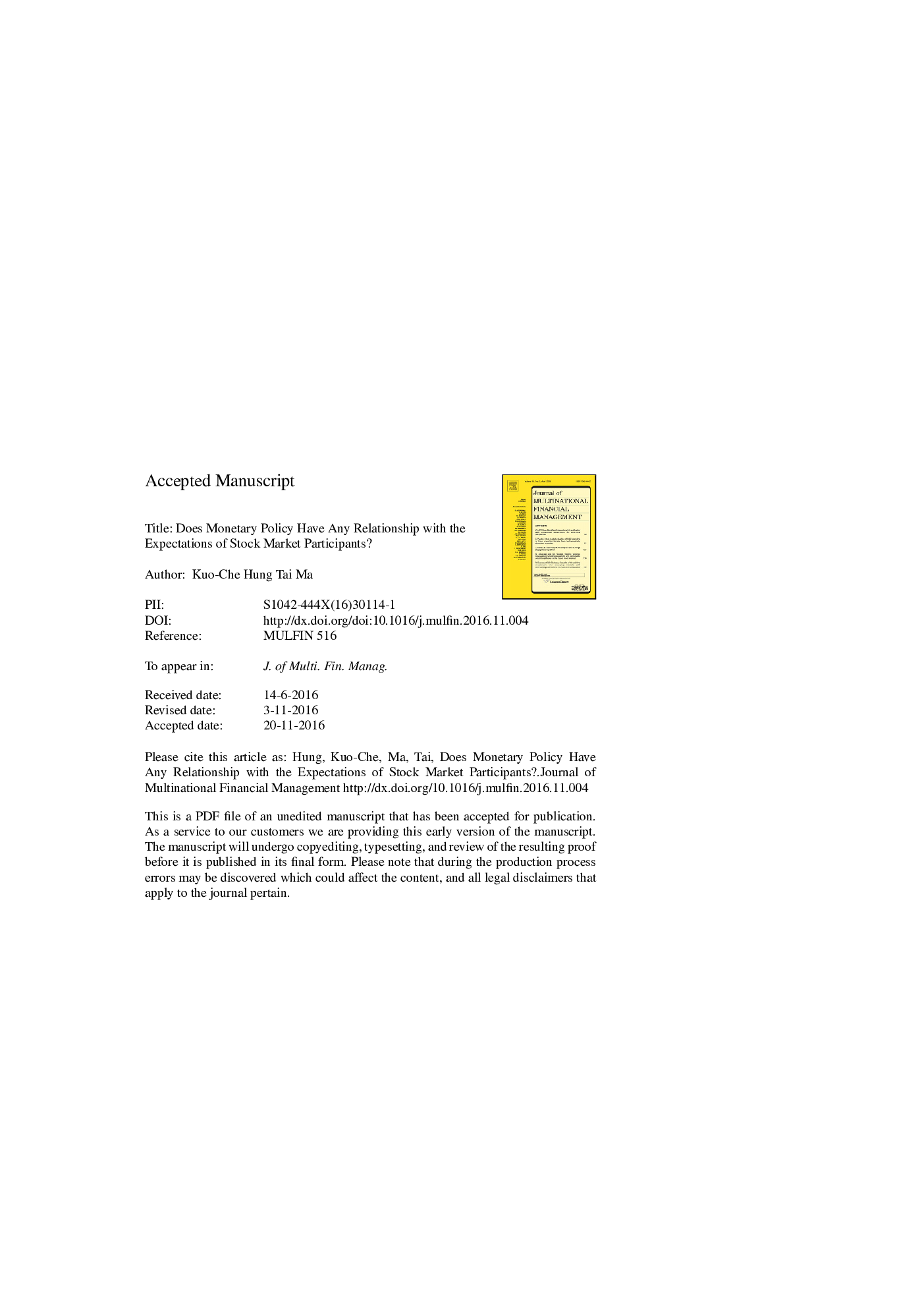| Article ID | Journal | Published Year | Pages | File Type |
|---|---|---|---|---|
| 5101597 | Journal of Multinational Financial Management | 2017 | 39 Pages |
Abstract
This study re-examines the effect that price movement expectations of traders in different stock market states have on monetary authorities when deciding monetary policy. We use heterogeneous agent models to estimate the trading strategies of chartists who use expected stock price movements as the basis of their trading strategy. In contrast to the traditional view that monetary policy is not subject to the influence of the stock market, we find that during stock market bubbles (stock market crises), an increase in the fraction of chartists influences subsequent policy decisions to raise (lower) interest rates. This is mainly because monetary authorities are aware of the impact of abnormal stock price volatility on the overall economy. In the year following the occurrence of a bubble (crisis), there were slight decreases (increases) in interest rate levels. However, policymakers' adjustments of interest rate policy during bull and bear markets may encourage stock price movements.
Related Topics
Social Sciences and Humanities
Economics, Econometrics and Finance
Economics and Econometrics
Authors
Kuo-Che Hung, Tai Ma,
